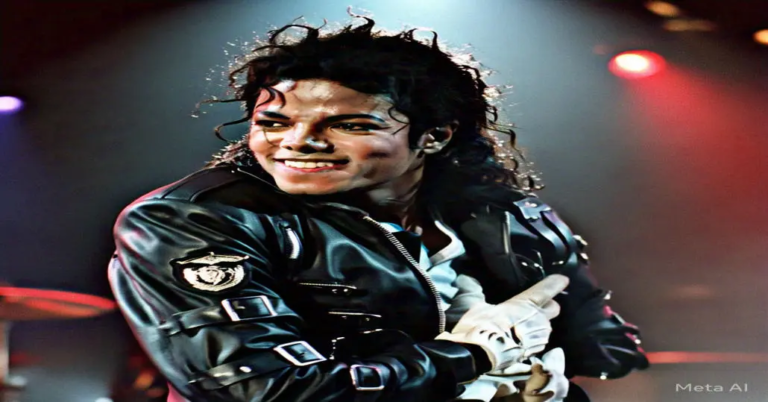Lady Gaga biography
THE WOMAN WHO REINVENTED POP Lady Gaga: The Queen of Reinvention

Lady Gaga is more than just a pop star, (born Stefani Joanne Angelina Germanotta). She is a change-maker, an innovator and a cultural disrupter. From her early days on the music scene in 2008 to her Oscar-nominated acting performances, Lady Gaga has shown that reinvention can be the key to longevity in an ever-changing entertainment industry. But it’s not just her chameleon-like transformations that’s earned her the title of “Queen of Reinvention”—it’s that she has an uncanny knack for evolving, pushing herself, and channeling something new every step of the way in every part of her career, from fashion, to acting to activism.
In this article, we are going to examine Lady Gaga’s music evolution, bold fashion, and impact on popular culture that have continued to garner the world’s attention. We’ll also consider how her unabashed authenticity and relentless effort to push boundaries have secured her a spot in the pantheon of global superstars.
The Queen of Pop: Lady Gaga: From Stefani to Superstar
Before she was a household name, Lady Gaga was an up-and-coming artist named Stefani Germanotta. When Stefani was born in NYC to a strict catholic upbringing and a passion for classical music and performance art Lady Gaga was a million miles away. But her love of pop culture and a need to be noticed paved the way for what would become one of the most successful pop careers in history.
The Fame: A Star-born Pop Lady Gaga Ascends
The singer skyrocketed into fame with the debut of The Fame in 2008. The album, which included hits like “Just Dance” and “Poker Face,” combined addictive pop hooks with electronic dance beats and set the stage for a new era in pop music. Immediately, Gaga’s persona stood apart from that of other pop stars. She wasn’t just another artist attempting to strike a balance between the glamorous and the relatable, she was an avant-garde performer who tested the limits of what pop music could be.
But The Fame was more than an album. It was a prelude to a persona that would come to be associated with the concept of reinvention. Lady Gaga was not just a singer; she was a performance artist, using her music videos, stage performances and public appearances to spin tales about identity, fame and simply being alive in the world. Infectious pop hooks and an outrageous imagery which included and wasn’t limited to an iconic music video for “Poker Face,” left no doubt that Gaga was a force to be reckoned with in pop music.
The Fame Monster: Defining the Legacy of Lady Gaga
In 2009, Gaga expanded success with The Fame Monster, which spawned the successful singles “Bad Romance”, “Telephone” and “Alejandro”. The project bucked her up, too, with tracks like “Bad Romance” and “Alejandro” that would become standards in the history of pop music. With The Fame Monster, Gaga emerged as a provocateur, an artist unafraid of taking on controversial subject matter and expressing herself visually—often in abstract, bizarre ways.
Her performances in this era — where she performed wearing larger-than-life costumes, made politically charged statements and had high-concept music videos — pushed pop music to new heights. Lady Gaga’s visual aesthetic was well on par with her music, and fans came to appreciate that Gaga was not just a pop star, she was a living, breathing piece of art. Her readiness to take chances with both her sound and her look established her as a pop culture avant-gardist who dared both her fans and her critics to reconsider what pop music could be.
Reinventing Her Sound: Musical Evolution Across Eras
One of the most interesting things about Lady Gaga’s career is, stylistic reinventions aside, how she’s always sounded like Lady Gaga. Her albums are different reflections of her musical personality, and she is able to avoid becoming predictable or boring as a result. From pop to jazz, country and beyond, Gaga has constantly transformed herself without sacrificing her fundamental identity as a performer.
Lady Gaga Born This Way: The Power Anthem
Born This Way (2011) then, is commonly referred to as Lady Gaga’s most ambitious album. It was a pointed rebuttal to her critics, and a celebration of diversity, inclusivity, and empowerment. The opening track, “Born This Way,” instantly emerged as an anthem for the L.G.B.T.Q.+ community, as well as for all those who felt outcast or different. The album mixed up dance music with rock and disco, modifying the pure pop sound of her previous albums.
The album’s themes hit close to home for Gaga, as she started to use it to open up about her own experiences with identity, fame, and mental health. But what set Born This Way apart was not just its messaging, or that it was a statement — it was Gaga’s ability to write songs that were universal while remaining in the avant-garde. Tracks like “Judas” and “Marry the Night” also revealed Gaga’s interest in exploring difficult emotional territory using loud and often harsh sound.
ARTPOP: A Brave, Experimental Pop Art Experiment
In 2013, Gaga put out ARTPOP, which many critics and fans considered her most divisive album. The record combined electronic, dance, and avant-garde music with visual art, erasing boundaries between pop music and performance art. Despite not being the commercial or critical hit of her previous albums, ARTPOP was a turning point in Gaga’s career: it proved that she was the willing to let her artistic vision take over at the expense of her audience.
But for all that mixed response, ARTPOP was another step in Lady Gaga’s becoming. It spoke to her ambition to challenge the strictures of mainstream pop and to play with new, at times unnerving ideas. Its lead single, “Applause,” was a tribute to Gaga’s fanbase and to the very notion of unapologetically owning who you are, and how you feel, because, fuck the haters.
Joanne: A Personal and Acoustic Stride
Following the lukewarm response to ARTPOP, Lady Gaga overhauled her sound for the darker, more stripped-down Joanne (2016). This time around, Gaga pursued a more stripped-back, country-influenced sound that incorporated rock and Americana. The album was highly personal, inspired by Gaga’s life and relationship to loss and family, particularly the death of her aunt Joanne, whose name graces the project.
The closer Joanne was not about spectacle but about vulnerability. Songs like “Million Reasons” and “Joanne” exposed a side of Gaga that few had seen before — an artist who was willing to be raw and vulnerable. It was a departure from who she used to be, but showed that Gaga didn’t necessarily need the outlandish imagery and theatricality to make an impression.
Chromatica: Dancing Again, in Healing, Growing Pains and Costume Armour
In 2020, Lady Gaga returned to her roots with Chromatica, a dance-pop album that was both a throwback to her early work and an exploration of deeper emotional territory. The album, which featured collaborations with Ariana Grande and Elton John, was a reflection of Gaga’s journey through trauma and healing, incorporating themes of mental health, heartbreak, and recovery.
Chromatica blended futuristic production with emotional depth, making it both a commercial success and a critical triumph. With tracks like “Stupid Love” and “Rain on Me,” Gaga once again proved her ability to adapt while maintaining the same energy that made her a star in the first place.
Fashion as Identity: How Lady Gaga Changes the Rules
Lady Gaga’s fashion has become just as legendary as her music. From her jaw-dropping red carpet style moments, to serving as a designer’s muse, Gaga has always used her fashion choices as a vehicle for self-reinvention and pushing the boundaries of normalcy. For her, fashion can be more than just clothing; it’s a way for her to express herself and tell a story about who she is and where she’s going.
Meat Dress And Shock Value
Probably the best known (or most notorious) moment in Gaga’s style history happened in 2010 when she wore a dress crafted out of hunks of raw meat to the MTV Video Music Awards. Worn and designed by Franc Fernandez, the dress was more than controversial — it was world-famous. It was shocking, sensational and memorable.
The meat dress was, however, more than a shock tactic. Gaga said it was political, representing her declaration to fight for women and the LGBTQ+ community. It was both a literal and metaphorical rebellion against the objectification of the human person. The dress, then, became emblematic of Gaga’s belief in fashion as a means to challenge the status quo, refusing to be seen as a celebrity and rather treating the way she presented herself as a voice for social change.
Neat and Tidy, Keep it Sleek
As Gaga’s career developed, so did her fashion direction. As the years went by, most notably during the A Star Is Born era. Here Gaga started to experiment with more refined, minimalist looks. She ditched her avant-garde ensembles in favor of sleek. And glamorous gowns that screamed Hollywood royalty. This change signified her journey in life as well — from the “crazy” (not sorry) early Gaga to a more polished, mature lady.
Scarlet for the Oscars: The transition was particularly evident in her 2019 Oscars performances. When she stepped out in a chic black dress and light makeup. Showing Old Hollywood glamour is sophistication. It was apparent Lady Gaga was no longer just a pop star — she was a worldwide phenomenon who could steal gazed on any stage. Whether the red carpet or the silver screen.
Lady Gaga Beyond Music: Film, Advocacy and Influence

Lady Gaga’s reach extends beyond music. She has become a prominent advocate on social causes and an actor.firming her footing as a multi-faceted pop culture icon.
Performances and film careers out are Oscarworthy performance
Rose was a defining moment in Lady Gaga’s career, but so was her role in A Star Is Born (2018). Wells fargo statement of account online statement generator. Sonnet structure and rhyme Get picasso website. The plot of the film,ishing. But a music industry that discovered a talented musician and manager for a bank-owned property. Nobody knows the baby girl who was buried in them.
And Lady Gaga’s performance was eulogized. Again reinforcing that Gaga was more than a pop star. Then she was the kind of artist who could deliver complicated, nuanced performances.
Advocacy Around Mental Health and LGBTQ+ Support
Gaga, meanwhile, has used her platform to keep it real about her own mental health battles. Where include PTSD and chronic pain. In turn destigmatising a society that frequently demeans such discussions.
Her passion for gay rights is heavy throughout her career. Songs like “Born This Way” became battle cries for the LGBTQ+ community. And Gaga has used her platform to fight discrimination and inequality. Her aback for LGBTQ+ issues has further cemented her as an ally of and advocate for social change.
The Secret of Lady Gaga Success in Pop Culture
What it is that has sustained Lady Gaga. As our reigning pop provocateur for more than a decade?. Because of her unfurling commitment to reinvention but also to herself, in her own, evolving way. Gaga isn’t a follower of trends; she’s an originator of them. Whether it’s through her artistry, style, or political leanings, she always knows how to keep people on their toes.
This ability to constantly refresh herself ‘reboot’, while always remaining true to her core as an artist. Is what has enabled her to stay relevant in such a fast moving industry. LaMorte Lady Gaga knows that in order to be at the top, you must never stop evolving. In doing so, she’s not only remained relevant. She’s also forged a legacy that will endure beyond her lifetime.
Conclusion: Are We Still Gaga for Gaga?
Lady Gaga isn’t just a pop star. She is a cultural phenomenon, a musician… whose ability to transform herself time . And time again has kept her relevant, prevalent and entertaining for more than ten years. Through her fearless approach to style. Her musical evolution and her commitment to social causes. She’s made it clear that staying relevant requires more than just riding trends. It’s about constantly challenging yourself and your audience.
Whether she’s headlining the Super Bowl, starring in an Oscar short-listed film, or campaigning for mental health. Lady Gaga showcases that whatever guise that transformation isn’t just a change tactic. It’s your ticket to breaking the mould and sinfully transcending in a fast-paced world.
Lady Gaga will continue to be a fixture in pop culture. For years to come because she gets the power of transformation. However, that’s exactly what makes her the Queen of Reinvention.


















